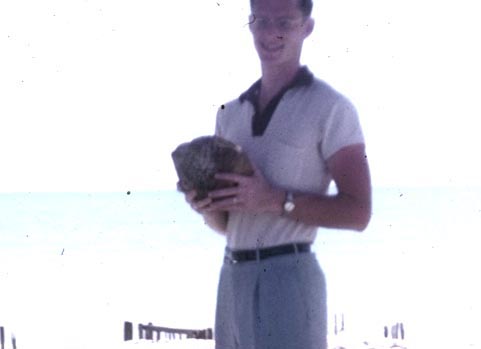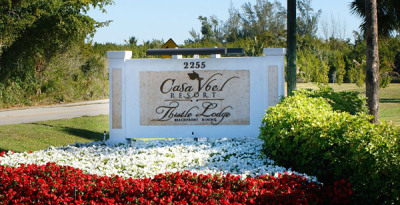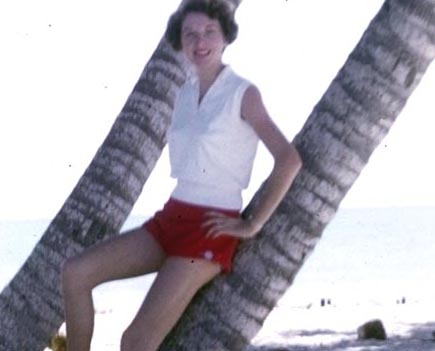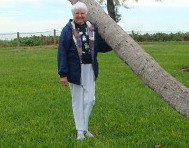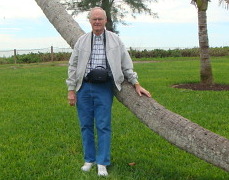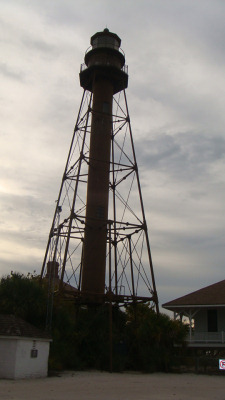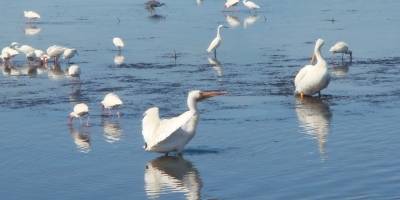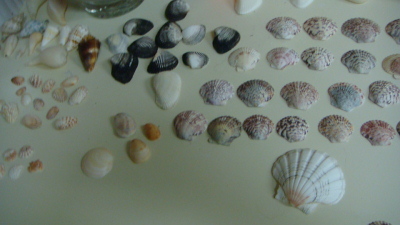After a week of visiting
with family and friends
in Brandon, we left for
Sanibel on Saturday morning.
February 11th. Our first stop
was at the fairgrounds in
Sarasota where we left the motorhome to continue on south.
The route south took us down McGregor Boulevard in Fort Myers within three blocks of our old home place at 1420 Byron Road. Surprisingly, the yard was well kept and everything looked good. The royal palms that I planted in 1957 as yearlings are now 50 to 60 feet tall.
This trip to Sanibel was a re-enactment of our honeymoon trip there in 1954 with reservations at the Casa Ybel Resort - our 58th anniversary date was February 13th.
Things have changed drastically since that earlier trip. Whereas, it required a long ferry ride then, now a modern bridge ($6.00 toll) provides easy access to the island. The island is no longer a sleepy little retreat. There’s been a lot of building, and traffic was heavy. It is a tropical paradise. The Casa Ybel has been an full service, island resort since the 1920s. When we were here in 1954 it was just the lodge and restaurant and a few cottages. It is now an enlarged lodge, restaurant (Thistle Lodge) and fifteen outbuildings, each with eight apartments - and they were fully rented!
Sanibel Island claims to have the world’s best shell collecting beach. The island is 14 miles long and 4 miles wide at its widest, laying lengthwise in an east/west direction. Most of the barrier islands in Florida lay in a north/south direction along the coast. That east/west positioning with nothing to the south but open water for hundreds of miles, catches the shells and makes Sanibel a haven for the shell collectors.
There is a world class shell museum on the island where thousands of varieties of shells are on display. We watched a movie at the Shell Museum that described the life-cycle of shells and left us forever in awe of this, another beautiful example of God’s handiwork. People stroll the beach with head down, many with long scoops to pick up their finds without bending over. When the water is calm, the real pros wade along in knee deep water to snatch up their finds before they reach the beach.
Eating places abound on the island. We ate shrimp and grouper at the Lazy Pelican, breakfast at the Lighthouse Café, lunch at the Island Cow, and another lunch at the Thistle Lodge at Casa Ybel. It would take much longer than the two full days we had to sample them all. The food was excellent at all the places, but quite expensive. At the Lighthouse Café and the Island cow, we waited for a half hour for a table. The Thistle Lodge - a part of the Casa Ybel complex - has been in existence since the 1890s, serving such notables as Thomas Edison and Henry Ford in their day.
At the west end of Sanibel a short bridge that spans the waterway to Captiva Island. Captiva is the retreat for many exclusive homes mostly hidden by large tropical trees and shrubs. The occasional glimpse from the road of a multi-million dollar estate confirms the exclusive nature of Captiva. We drove all the way to the end of the road , marveling at the extravagant beauty.
At the eastern end of Sanibel is the
98-foot Sanibel Lighthouse. The
tower is rather plain, but the keeper’s
quarters around it lend it a yesteryear
character. The light went into service
in 1884 at the insistence of cattlemen
who drove their herds to Punta Rassa
for loading on ships. Those ships
needed navigational help to make it
through the tricky waters off Point
Ybel. The light is still in service
though off limits to tourists, but there
is a beach and nature trail that tourists can enjoy.
About halfway down the island is the J. N. “Ding” Darling National Wildlife Refuge. World famous for its birding, the refuge encompasses more than 6,000 acres of wild lands and waters. It is the home of some 250 species of birds, 50 reptile and amphibian species, and some 30 types of mammals. Birding is the big attraction though. As we drove through the four mile long Wildlife Drive, we encountered large groups of photographers zeroing in
on the birds. At one stop
I counted a half dozen
tripods supporting cameras
with long telephoto lens
focusing on a group of white pelicans.
We later stopped at the Visitor’s Center and watched a movie about the birds. We learned that there were over 200 of the white pelicans that make their home here. We also learned about the red knot, a migratory bird that travels from the Arctic Circle to the Antarctic Circle and back every year (about 9,000 miles each way). Their southbound flight in the fall is non-stop to Sanibel where they spend a short rest, then another non-stop flight to the southern tip of Argentina to spend the winter. Reversing their trip in the spring, they make their rest stop in Delaware, before completing the round trip to the arctic. “Ding” Darling was a Pulitzer prize winning cartoonist and conservationist whose efforts resulted in this refuge.
There are lots of other things to do on Sanibel - hiking, biking, swimming, fishing, boating, canoeing, etc.- but it was cold and windy. The sun came out on our last day though, and bikers were out in big numbers. There are numerous bike trails and lots of places to rent bikes, but we didn’t get into that. Another day or two would have been nice, but we were committed to an Airstream rally in Sarasota beginning on the 14th.
